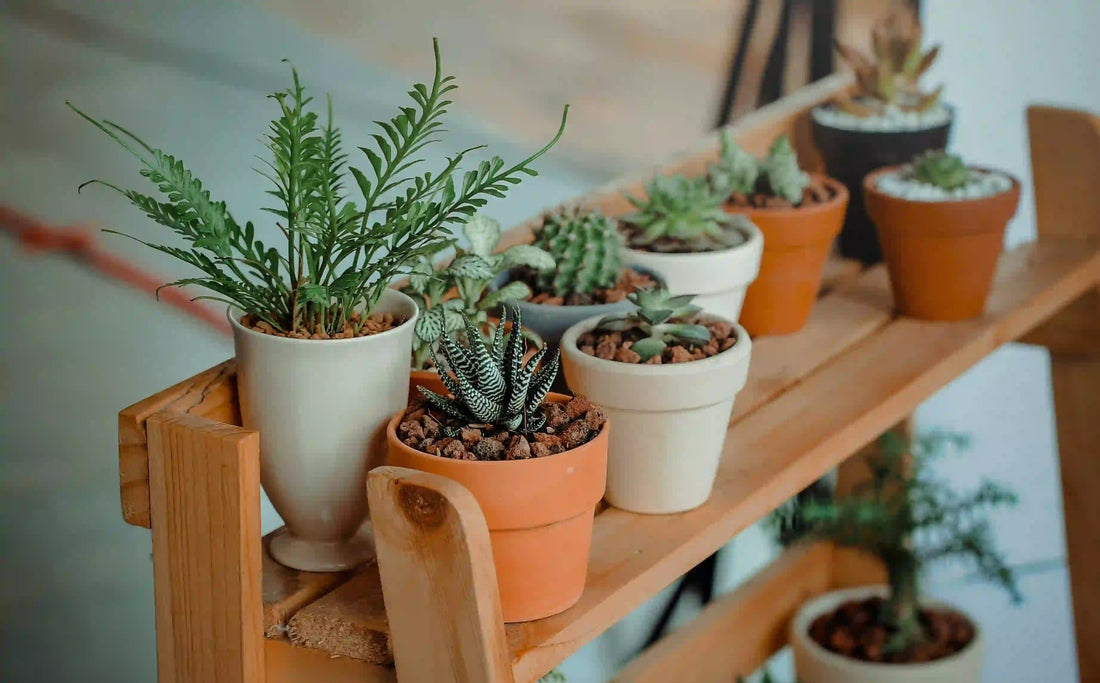
Treating Plants and How To Do It
Share
Treating plants involves a combination of care practices to ensure their health and well-being. Here's a general guide on how to treat plants effectively:
1. Watering:
Consistent Schedule:
Establish a regular watering schedule based on the specific needs of each plant. Some plants prefer to dry out slightly between waterings, while others need consistently moist soil.
Water Quality:
Use room temperature water and avoid extremes in water hardness. Ensure proper drainage to prevent waterlogged roots.
2. Light Exposure:
Know Plant Preferences:
Different plants have varying light requirements. Place your plants in locations that match their preferences for direct sunlight, indirect light, or low light.
Rotate Plants:
Rotate potted plants occasionally to ensure all sides receive equal exposure to light, promoting even growth.
Soil and Fertilization:
Quality Soil:
Use well-draining soil appropriate for each type of plant. Potting mixes designed for specific plant types are often available.
Fertilization:
Feed plants with a balanced, water-soluble fertilizer during the growing season. Follow the recommended application rates on the fertilizer packaging.
3. Pruning and Grooming:
Remove Dead or Yellow Leaves:
Regularly prune dead or yellowing leaves to encourage new growth and prevent the spread of diseases.
Encourage Bushier Growth:
Pinch back stems to promote bushier growth. Prune selectively to maintain the desired shape.

4. Pest Control:
Inspect Regularly:
Regularly check plants for signs of pests such as aphids, spider mites, or scale insects.
Natural Remedies:
Use natural remedies like neem oil or insecticidal soap for pest control. Beneficial insects like ladybugs can also be introduced to control pest populations.
Read More :
Houseplant Aphids and How to Get Rid of Them
Indoor Plants Nursery and How to Care for Them
5. Humidity Management:
Adjust for Tropical Plants:
If you have tropical plants, maintain higher humidity levels. Grouping plants together or using a humidity tray can help.
Mist Leaves:
Mist the leaves with water to increase humidity, especially during dry periods.
6. Temperature Considerations:
Avoid Drafts:
Keep plants away from drafts, as sudden temperature changes can stress them.
Winter Dormancy:
Some plants may go through a dormant period in winter, requiring reduced watering and fertilizer.
7. Support and Staking:
Provide Support:
Use stakes or supports for tall or leggy plants to prevent them from toppling over.
Regularly Check Supports:
Periodically check the supports and adjust as needed as the plant grows.
8. Repotting:
Monitor Rootbound Plants:
If a plant becomes rootbound or outgrows its container, consider repotting into a larger pot.
Refresh Soil:
Repotting also allows you to refresh the soil and provide new nutrients.

9. Preventive Care:
Cleanliness:
Keep the plant and its surroundings clean to discourage pests and diseases.
Quarantine New Plants:
Quarantine new plants before introducing them to your existing collection to prevent potential pest or disease transmission.
By incorporating these practices into your plant care routine, you can promote the overall health and vitality of your indoor and outdoor plants. Adjust these guidelines based on the specific requirements of different plant species.
Recomendation by : https://yumegardens.com/
Referenced by : https://www.kompas.com/
